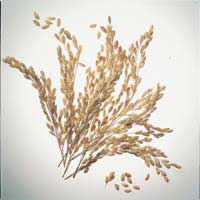 |
 |
| current issue |  |
past issues |  |
send a letter/news |  |
address update |  |
advertise |  |
about us |  |
alumni home |
Features
Quiet HeroPage 3 of 4
Li found himself standing at the threshold of a new life without his beloved daughters, Su Li and De Li, whose Chinese names represent their father's two great passions, science and democracy, the very ideals that had propelled him to this point. For the next two years, Li and his wife spent most of their time trying to get their daughters, who were then 17 and 10 years old, safely out of China.

|
Li is grateful to the many people who helped them, including church members, several senators and even the White House. The Chinese government finally released both girls, and the family began to rebuild their lives thousands of miles from home. They were starting from scratch--no furniture, no books, none of the beloved artifacts of their life in China.
But Li still had his work. When the Tiananmen Square tragedy slammed the door shut on his future in China, Li found another avenue to pursue his dream: the U.S. EPA's new Office of Global Change. And so it was that one of China's former top administrators found himself tackling the question of how to quantify greenhouse gas emissions from U.S. agriculture.
Li began with nitrous oxide, the least known of the three agricultural greenhouse gases, which include carbon dioxide and methane. For three years he worked to develop a model designed to quantify emissions from a gas with characteristics that make it exceedingly difficult to measure. His model took into account chemical, physical and biological processes.
"He was way out ahead in producing a model that was attempting to be very detailed and robust at local-scale measurements," says Robert Harriss, a former professor in UNH's Complex Systems Research Center at the Institute for the Study of Earth, Oceans and Space. "Most work being done at that time, and even still today, is all about global modeling, which sort of produces an average for the world. Whereas if one wants to make changes in the way people do farming or forestry, it will generally occur in a specific area. And that's what Changsheng realized--that these models had to come back to the human scale."
 Perry Smith
Perry SmithPost-doctoral researcher Jianbo Cui, left, and research associate professor Steve Frolking '80, '86G process Chinese rice samples to analyze their nitrogen content. |
When Harriss invited Li to UNH in 1991 to give a talk about his model and work in China, it was obvious that Li and EOS were made for each other. "He had a grasp of the issues that was stunning," says Harriss. "It was clear to us that Changsheng's scientific skills and vast knowledge of China would enrich our environmental programs at UNH."
Li joined the UNH team as a research professor in 1992 and has spent the years since refining his biogeochemical Denitrification-Decomposition (DNDC) model, which is used to describe the cycling of carbon and nitrogen and their effects on plant production, soil fertility and trace gas emissions in the ecosystem. "We make changes almost every month based on new research," says Li. "The improvement is endless."
Li's contribution, along with others, has placed UNH's EOS institute at the forefront of the field, according to Harriss, who is now director of the Environmental and Societal Impacts Group at the National Center for Atmospheric Research in Boulder, Colo. "It's particularly remarkable for a small public university to be in such a prominent position."
Berrien Moore, director of EOS, notes that Li's model has been used by more than 20 countries. It has been implemented in the farmlands of California, the pastures of the United Kingdom and the rain forests of Costa Rica. "Li's work on biogeochemical modeling is making a major contribution to international efforts to improve national-scale assessments of greenhouse gas emissions," Moore says.
In a striking turn of events, Li's current work has taken him back to China, where he is using the model to study methane emissions from rice fields. "Methane has a much greater warming potential than carbon dioxide," says Li, explaining that methane is 21 times more potent than carbon dioxide, the more famous greenhouse gas. Since 1750, methane concentrations in the atmosphere more than doubled; in the last 20 years, the rate of increase has slowed. Li's recently-completed, NASA-funded study finds that changes in China's rice farming practices may have led to the decrease.
Page: < Prev 1 2 3 4 Next >Easy to print version

